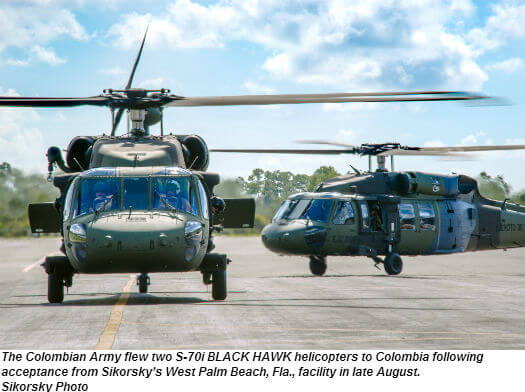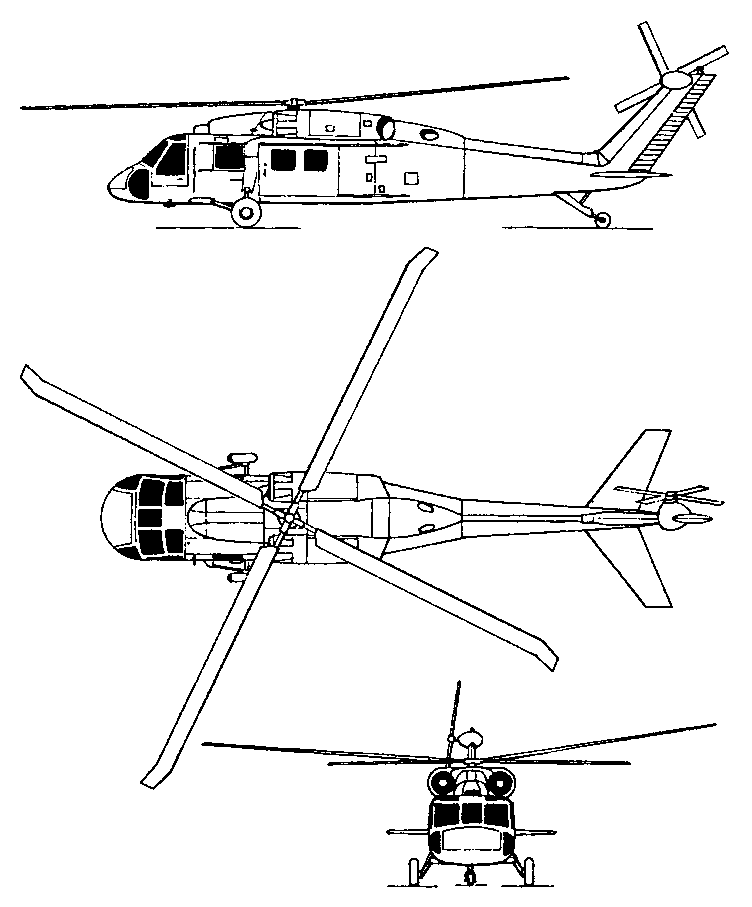Sikorsky S 70: Enhancing Helicopter Performance and Convenience
Sikorsky S 70: Enhancing Helicopter Performance and Convenience
Blog Article
High-Performance Multi-Role Rotorcraft Featuring Advanced Cockpit Technologies and Integrated Sensor Systems
The world of rotorcraft modern technology has actually seen notable innovations in recent times, particularly in the realm of high-performance multi-role rotorcraft equipped with sophisticated cockpit innovations and effortlessly incorporated sensor systems. These technologies have not just enhanced the operational abilities of rotorcraft however have actually additionally dramatically influenced modern-day aviation procedures on numerous fronts. From boosted goal convenience to boosted operational efficiency, the convergence of advanced cabin modern technologies and integrated sensing unit systems has actually ushered in a brand-new age of opportunities for rotorcraft applications. In the complying with conversation, we will certainly discover the development of rotorcraft innovation, dig into the world of innovative cockpit innovations, and check out the effects of integrated sensing unit systems on the operational convenience and performance of contemporary rotorcraft.
Evolution of Rotorcraft Modern Technology
The evolution of rotorcraft innovation has actually been marked by considerable innovations in aerodynamics, materials, and propulsion systems, forming the abilities and efficiency of contemporary rotorcraft. Wind resistant improvements have improved the effectiveness and ability to move of rotorcraft, allowing for boosted rate, dexterity, and stability during flight (sikorsky s 70). Developments in products, such as the usage of composite materials and advanced alloys, have actually resulted in lighter yet more powerful rotorcraft frameworks, enhancing general performance and toughness. Furthermore, developments in propulsion systems, consisting of much more effective engines and ingenious propulsion innovations, have enabled rotorcraft to accomplish higher elevations, faster speeds, and higher payloads.
These innovations have not just transformed the capabilities of rotorcraft but have likewise broadened their applications across numerous markets, including military, business, and emergency situation solutions. The constant advancement of rotorcraft innovation remains to drive advancement in the area, pushing the boundaries of what is feasible and shaping the future of vertical trip.
Advanced Cockpit Innovations
Building upon the fundamental advancements in the rules of aerodynamics, materials, and propulsion systems, the realm of rotorcraft modern technology currently moves emphasis towards pioneering Advanced Cabin Innovations. The integration of cutting-edge technologies within the cockpit setting plays a crucial duty in improving the operational abilities, safety and security, and performance of modern-day rotorcraft. sikorsky s 70. Advanced Cabin Innovations include a vast array of functions made to provide pilots with boosted situational understanding, streamlined data management, and instinctive control user interfaces
One of the crucial improvements in cockpit layout is the application of glass cockpits, which change conventional analog assesses with high-resolution screens. These digital systems offer adjustable layouts, real-time data integration, and enhanced readability, making it possible for pilots to accessibility vital details at a glance. Progressed avionics systems, such as fly-by-wire controls and boosted reality displays, are revolutionizing just how pilots interact with the aircraft, enabling for accurate control and improved decision-making capabilities.


Incorporating sophisticated cockpit technologies not only improves pilot efficiency yet additionally adds to overall mission effectiveness and security in complex functional settings. By leveraging modern innovations within the cockpit, rotorcraft manufacturers are setting new standards for functional excellence and mission success.
Integrated Sensor Equipments
With the advancement of rotorcraft technology, the combination of innovative Integrated Sensor Equipment has ended up being critical in improving operational performance and security. These Integrated Sensor Systems incorporate a large range of innovations that supply critical information for various features you can find out more such as navigating, surveillance, targeting, and ecological surveillance. By seamlessly incorporating sensors like radars, cameras, lidar, and infrared systems into rotorcraft, drivers can take advantage of boosted situational understanding, boosted mission capacities, and lowered pilot work.
One secret advantage of Integrated Sensing unit Equipments is their capacity to gather real-time data and provide actionable understandings to pilots and objective drivers. Progressed radar systems can spot and track targets over long distances, enabling for very early risk detection and reliable feedback planning. Additionally, integrating infrared and electro-optical cams allows rotorcraft to perform reconnaissance and surveillance objectives with accuracy and accuracy.
Basically, the combination of advanced sensor innovations into rotorcraft not only enhances operational effectiveness however also contributes considerably to general goal success and crew safety and security. As rotorcraft continue to evolve, the function of Integrated Sensing unit Solution will certainly continue to be at the leading edge of development in the aerospace sector.
Functional Versatility and Performance
Enhancing functional convenience and efficiency in rotorcraft is an all-natural progression from the assimilation of advanced Integrated Sensor Systems. By leveraging the information and understandings offered by these sophisticated sensing unit systems, rotorcraft can optimize their performance throughout various missions and environments.
Operational adaptability includes the capability of rotorcraft to adjust to different functions and circumstances effectively. With innovative cockpit technologies and integrated sensor systems, rotorcraft can flawlessly transition between jobs such as search and rescue, medical emptying, monitoring, and extra. This convenience boosts the rotorcraft's capacity to satisfy varied operational demands without calling for extensive reconfiguration.
Efficiency in rotorcraft procedures is essential for maximizing goal effectiveness and source usage. Integrated sensor systems play a critical duty in improving operational performance by offering real-time data on weather, terrain mapping, target monitoring, and a lot more. This information makes it possible for pilots to make informed decisions quickly, enhance flight paths, preserve fuel, and boost total goal productivity.
Effect On Modern Air Travel Operations

Additionally, the combination of advanced sensing units helps with boosted objective planning and implementation, allowing rotorcraft to execute a large range of tasks with improved accuracy. From search and rescue operations to airborne firefighting and police objectives, the abilities of modern-day rotorcraft geared up with sophisticated cockpit modern technologies and integrated sensor systems are unrivaled.
Moreover, the influence of these developments expands beyond functional efficiency to cost-effectiveness and sustainability. By enhancing trip routes, fuel intake, and maintenance timetables, high-performance rotorcraft equipped with advanced cockpit technologies and sensing units add to decreasing operational prices and environmental effect, making them indispensable assets in contemporary aeronautics operations.
Final Thought
In final thought, the high-performance multi-role rotorcraft with innovative cabin innovations and incorporated sensing unit systems stands for a substantial evolution in air travel modern technology. These technologies enhance operational flexibility and effectiveness, inevitably influencing modern-day aeronautics procedures in a favorable means. The integration of these advanced modern technologies permits improved capacities and efficiency in various objective situations, showcasing the continued development of rotorcraft technology in the aviation market.
The realm of rotorcraft technology has actually seen notable innovations in current times, especially find more info in the realm of high-performance multi-role rotorcraft geared up with advanced cockpit technologies and seamlessly incorporated sensor systems. From improved objective flexibility to improved functional efficiency, the merging of innovative cockpit technologies and incorporated sensor systems has actually ushered in a brand-new age of opportunities for rotorcraft applications. In the adhering to discussion, we will certainly check out the evolution of rotorcraft innovation, dig into the world of sophisticated cockpit advancements, and take a look at the ramifications of integrated sensing unit systems on the functional convenience and effectiveness of modern rotorcraft.

Report this page